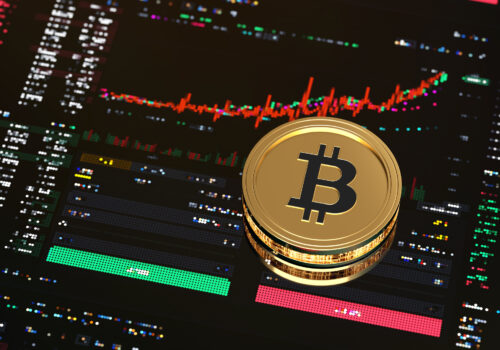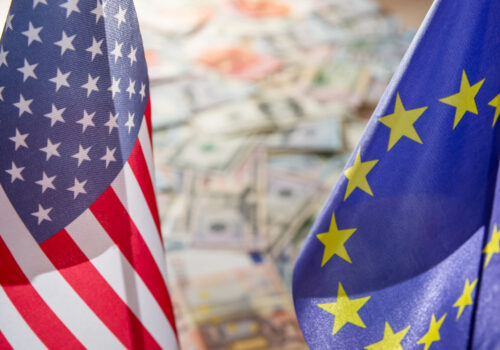What is strategic about the new digital assets reserve?
Last week, President Donald Trump announced the creation of a digital asset stockpile and strategic bitcoin reserve amid a flurry of recent executive orders. The decision was met with downturns in the digital asset and traditional equities markets and reflects several serious downsides as a matter of public policy.
For starters, the plan stems from a 2024 proposal by Senator Cynthia Lummis and largely functions as a centralized repository for assets that have already been seized by the federal government—for example, as part of criminal proceedings. That might be “budget neutral,” as the order says, but it is not a reserve in the traditional sense of a gold reserve used by central banks to redeem depositors or pay international debts. As a prominent Bitcoin thinker succinctly put it, “[t]here is no ‘strategic’ value in a crypto reserve.”
The executive order directs the government to simply hold (or later on, perhaps buy and hold) assets like bitcoins. Although the order vaguely criticizes the government’s “premature sales” in the past, “HODL’ing” (as the expression goes) may or may not be fiscally prudent, depending on whether or when to sell the assets. Separately, there are serious questions about if it is prudent for the government to essentially invest in select digital assets, as opposed to generating revenue in other ways. At the very least, the Secretary of the Treasury should develop concrete criteria and an authorization process for periodically selling or buying digital assets, to add transparency and provide an orderly means of decreasing volatility exposure. Senator Lummis’s original proposal, for example, contained some selling thresholds.
Second, the White House crypto czar David Sachs estimated that the federal government’s reserves comprised 200,000 bitcoin worth a staggering $17.5 billion at recent prices. If those numbers are still accurate, that would equal more than the total amount of gold held at almost all Federal Reserve Banks. That cannot be right as a matter of monetary policy. Even putting aside the polarizing debates about the long-term value of bitcoin (or lack thereof), the size of the new strategic reserve seems disproportionate given the risks and functions of the assets involved. Consistent with a transparent sales process, the Treasury should rightsize any digital asset reserve and use the remaining proceeds for other government programs.
Third, the cybersecurity challenges of having a centralized digital asset pool are not trivial, as the Atlantic Council highlighted in a prior report. Yet the executive order says nothing about how to start securing this new stockpile. Sacks tweeted that the pool would be akin to a “digital Fort Knox.” But Fort Knox has legendary security, is operated by 1,700 specialized employees, and adjoins a military base with 26,000 trained personnel. It is unclear what office, if any, at the Treasury could manage such a gargantuan security task for a digital asset reserve. The endeavor would be particularly difficult after the Department of Government Efficiency—or DOGE—unceremoniously disbanded teams of engineers like those in the 18F division, who were renowned for their private sector expertise. By contrast, Senator Lummis’s 2024 proposal highlighted security measures for “state-of-the-art physical and digital security” through inter-agency cooperation.
Perhaps most importantly, the ultimate risk of the executive order is that it embodies a form of crypto boosterism. Namely, it appears to tout an industry that President Trump came to embrace during the later phases of his political campaign, famously including the launch of his own meme coin just days before inauguration. To be fair, the White House revised the president’s earlier announcement that the reserve would include proactive purchases of select “altcoins,” which industry insiders worried “could be a vehicle for corruption and self-dealing.” That was a prudent move. But to many on Wall Street and main street, the order may still seem more like political maneuvering than sober monetary policy.
In a parallel universe, there could have been a thoughtful way for the Federal Reserve and Treasury to gradually study the possibility of holding digital assets on the balance sheet. They could have scrutinized the economic implications and prepared for security contingencies that might have included a bipartisan compromise around stablecoin legislation to specifically promote the strength of the dollar. But in today’s world, this executive order looks more slapdash than strategic. That may have been intended to bolster digital asset markets, but it has fallen flat on most fronts.
JP Schnapper-Casteras is a nonresident senior fellow at the Atlantic Council’s GeoEconomics Center and the founder and managing partner at Schnapper-Casteras, PLLC.

At the intersection of economics, finance, and foreign policy, the GeoEconomics Center is a translation hub with the goal of helping shape a better global economic future.
Further reading
Thu, Aug 8, 2024
What exactly is a strategic bitcoin reserve?
Econographics By Ananya Kumar
Bringing bitcoin into mainstream use is not reason enough to create a strategic bitcoin reserve.
Tue, Jan 28, 2025
The 2025 crypto policy landscape: Looming EU and US divergences?
Econographics By Hung Tran, Barbara C. Matthews
High level regulatory and policy alignment is possible. Divergences, heated rhetoric, and drama are inevitable.
Mon, Aug 12, 2024
Tech regulation requires balancing security, privacy, and usability
Fintech Frontlines By
Good policy intentions can lead to unintended consequences when usability, privacy, and security are not balanced—policymakers must think like product designers to avoid these challenges.
Image: Stack of Bitcoin on Dollar bank note, finance concept.


